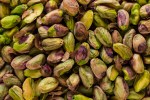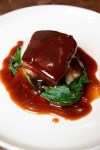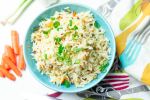
Although I do not have celiac disease, I know several people who do. Once you know what to avoid, it’s fairly easy to cook for someone who has to avoid gluten, but finding desserts is another story. Fruit, ice cream, cornstarch puddings – those are easy enough, but baking is more complicated.
I found this recipe in the New York Times. These are simple to make and quite delicious, intense with cardamom and fairly sweet. They go very well with a cup of tea.

A couple of notes: Shelled pistachios cost about $13.00 and up; unshelled are about half that. It took me about 20 minutes and two fingernails to shell enough for this recipe, but it was worth it. If you buy pistachios in the shell, be advised it will take more than you think it will to make 1 cup + enough to put on top.
I made superfine almond flour by blitzing regular almond flour in the food processor. The pistachios were easy to grind to a powder in the food processor too, using the pulse function. They can easily turn to a paste, though, so don’t overdo it.
The dough can be made ahead and stored, covered, in the refrigerator for 2 or 3 days.
PISTACHIO COOKIES
- 1-1/3 cups shelled pistachios, divided
- 1-1/3 cups superfine almond flour (see note above)
- 2/3 cup granulated sugar
- 2 teaspoons powdered cardamom (or more)
- big pinch salt
- 2 large egg whites
- 1/2 teaspoon pure almond extract or pure vanilla extract or pure orange extract
- Powdered sugar (confectioner’s) as needed
Preheat oven to 350. Line cookie sheet with parchment paper.
In a food processor or blender, grind 1 cup of the pistachios to a powder (a little crunchy is okay). Combine in a bowl with almond flour, sugar, cardamom, and salt.
In a separate small bowl, whisk the egg whites until foamy, then add the almond extract.
Pour the egg whites into the dry ingredients. With your hands, mix them together to make a damp and very sticky dough. Roll tablespoon-size portions of the dough into balls, roll those in the powdered sugar, and place on the parchment-covered cookie sheet. Press a pistachio into each cookie.
Bake at 350 about 15 minutes until very lightly browned. Do not overbake. Remove cookies to a rack to let cool. Makes about 30. Store tightly covered.

















